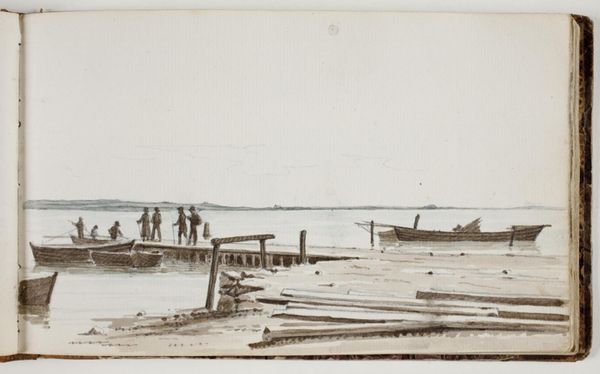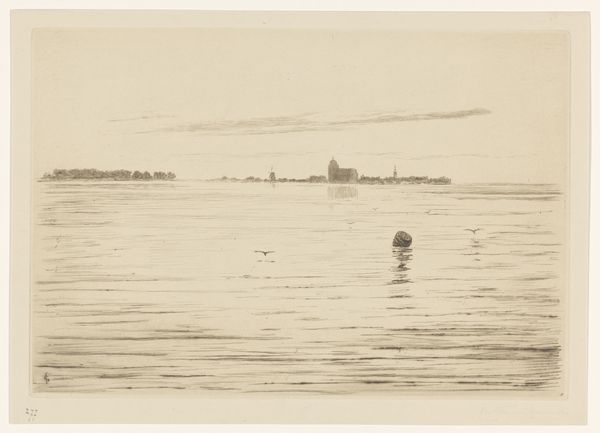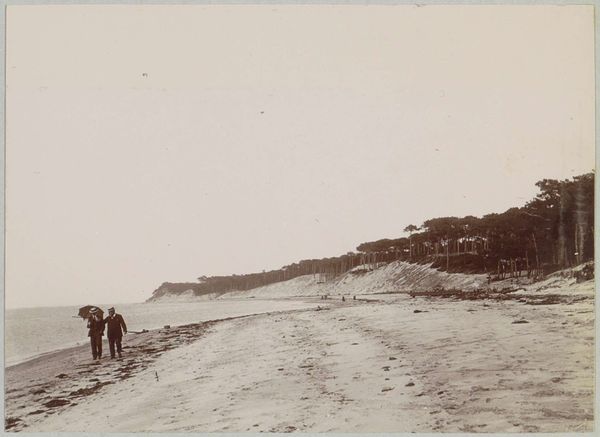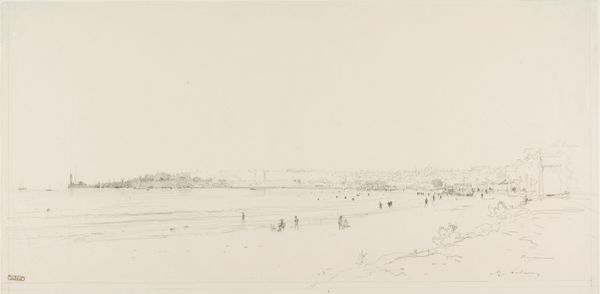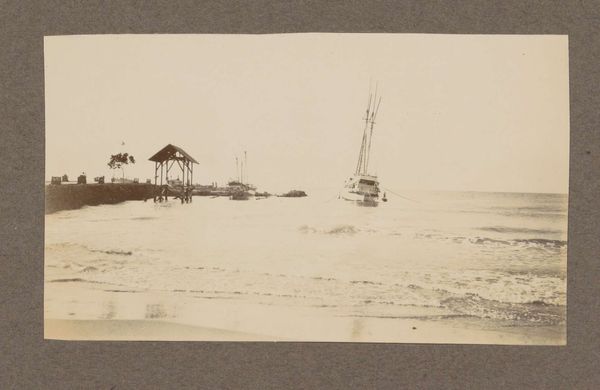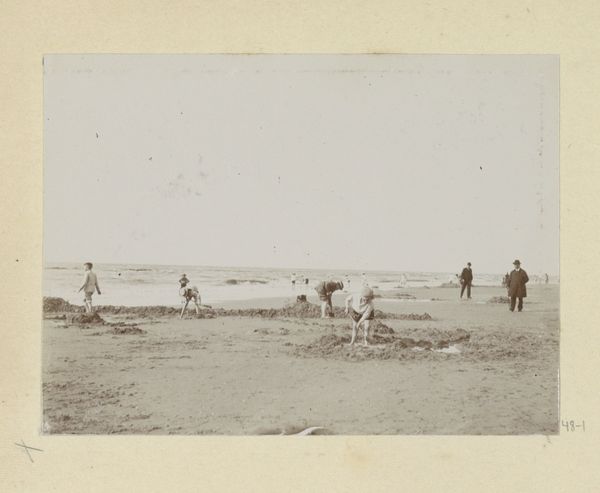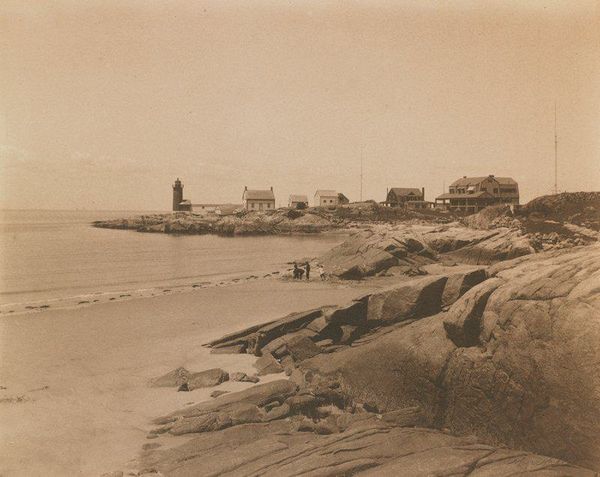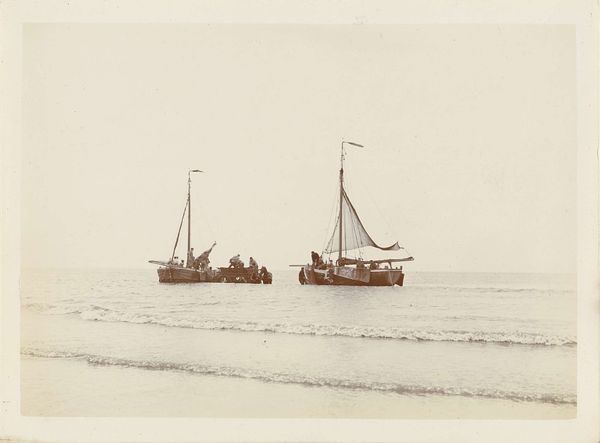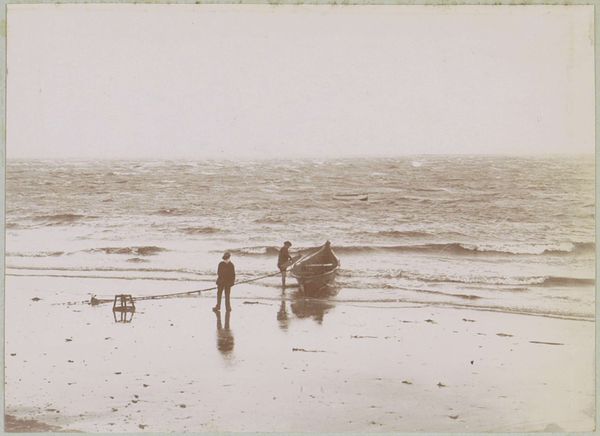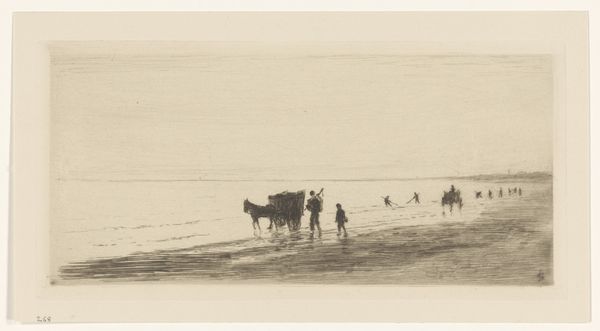
plein-air, photography
#
16_19th-century
#
pictorialism
#
impressionism
#
plein-air
#
landscape
#
photography
#
low atmospheric-weather contrast
#
england
#
monochrome photography
#
monochrome
Dimensions: 16.5 × 17.5 cm (image); 25.2 × 30.1 cm (paper)
Copyright: Public Domain
Editor: So here we have Peter Henry Emerson's "On Gorleston Sands" from 1887, currently residing at The Art Institute of Chicago. It’s a photograph, and it gives me a hazy, dreamlike feeling, almost like a memory. The figures seem to blend into the landscape. What's your take on this piece? Curator: The atmospheric quality you noticed is key. Emerson championed photography as an art form, breaking away from purely documentary uses. His "On Gorleston Sands" presents a constructed vision of rural England. Notice how he uses soft focus to evoke a particular mood, moving photography away from sharp realism. How might this resonate with broader artistic movements of the time? Editor: It seems almost Impressionistic, more focused on capturing a fleeting feeling than precise details. Curator: Exactly! Think about the context. It was exhibited and circulated amongst intellectual circles debating the status of photography within the art world. By aligning his work with Impressionism, Emerson sought to elevate photography’s status and artistic merit. Do you see this piece as challenging or reinforcing existing social structures of the time? Editor: I guess I see it as reinforcing a romantic view of the working class in England, with a strong landscape element and workers that seem naturally intertwined with nature. Almost picturesque. Curator: That's perceptive. The image aestheticizes labor, smoothing out social realities into a pleasing, consumable image. The muted tones and composition also connect it to popular conceptions of British identity tied to the land. And in many ways, defines British society even today. Editor: It's fascinating to see how photography could be used not just to record, but also to shape and comment on society. Curator: Precisely. Emerson wasn't just capturing a scene, he was constructing a narrative about English identity. Understanding these images within their social and historical context reveals much about the power of art and photography in culture.
Comments
No comments
Be the first to comment and join the conversation on the ultimate creative platform.
